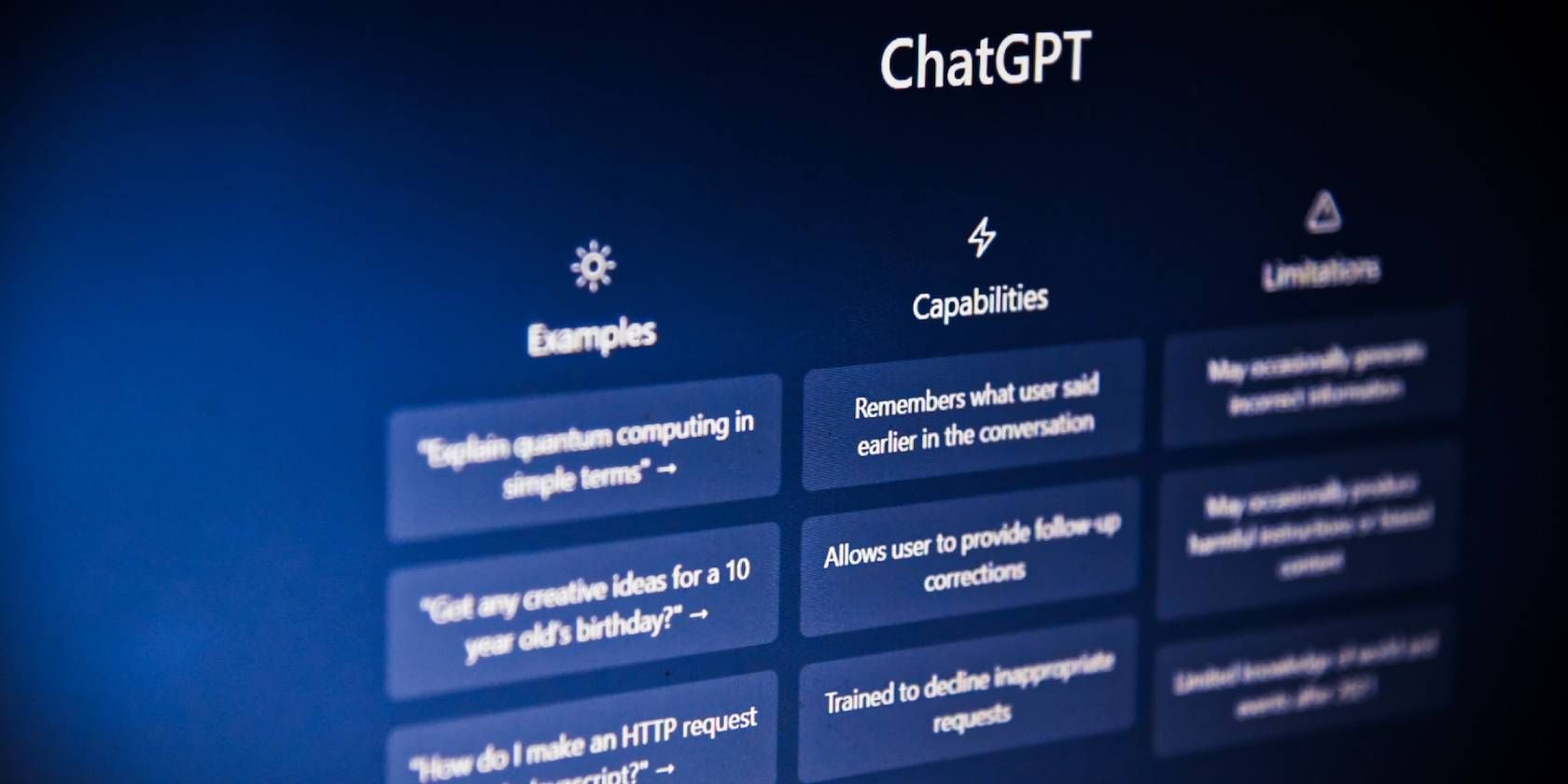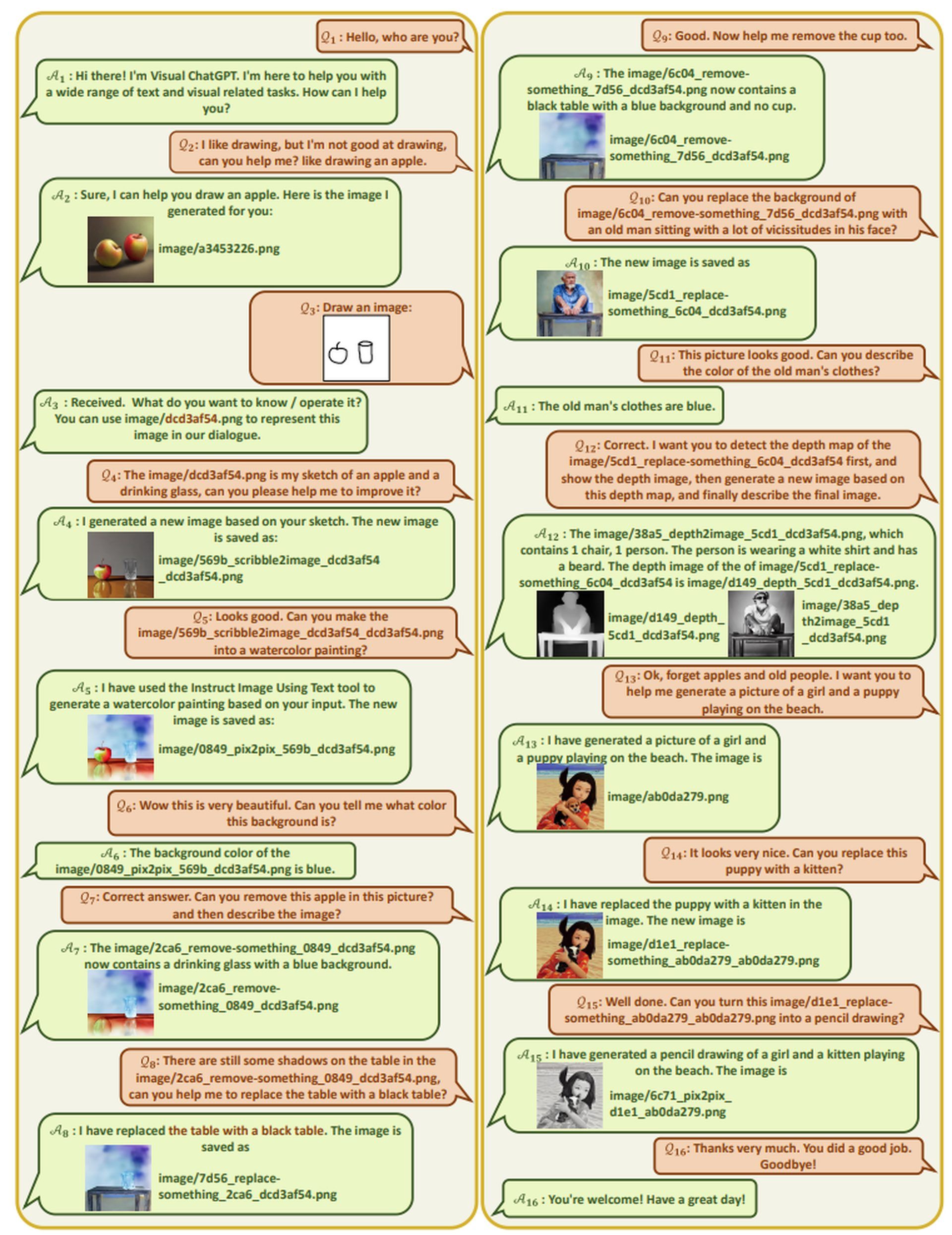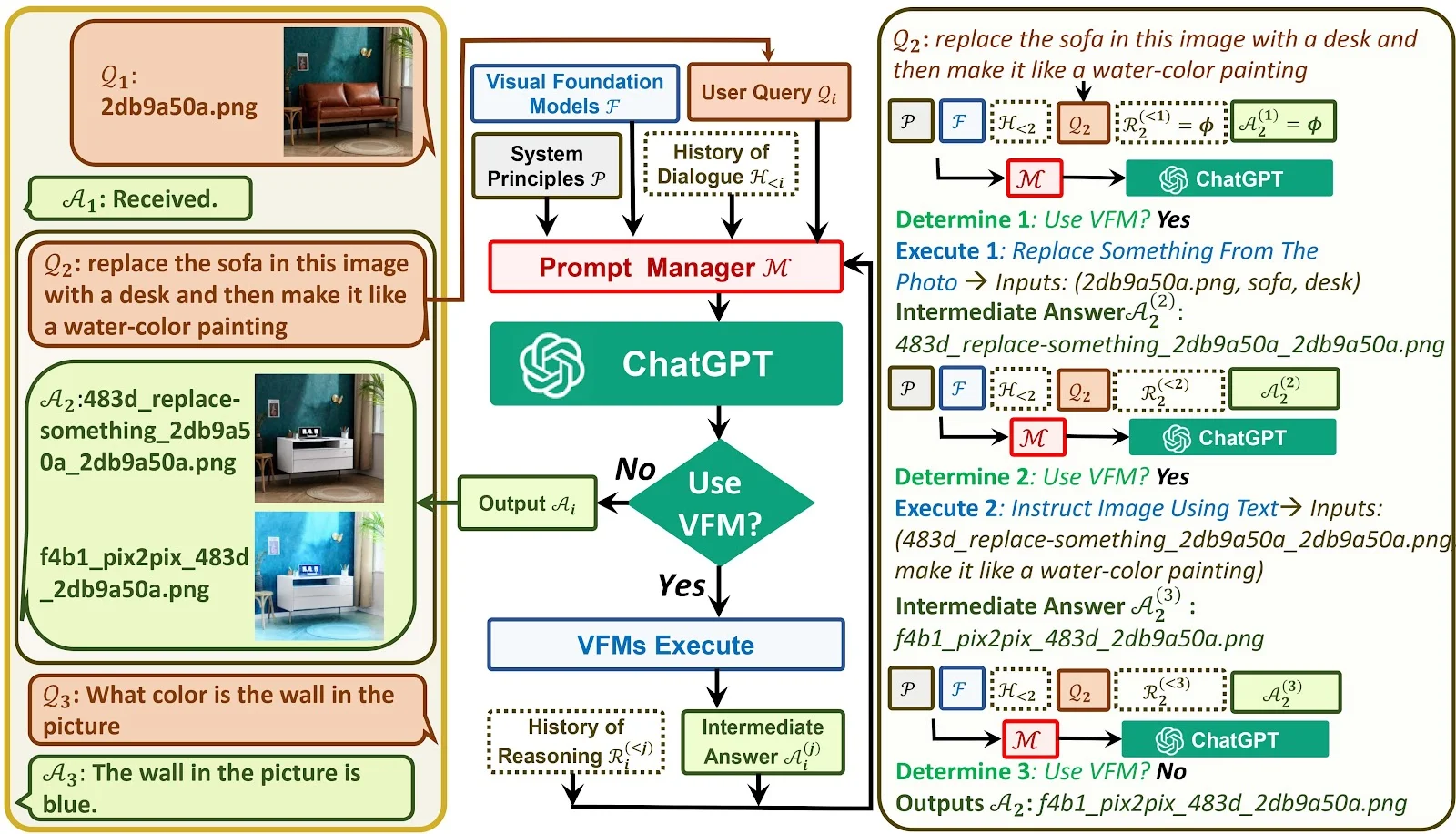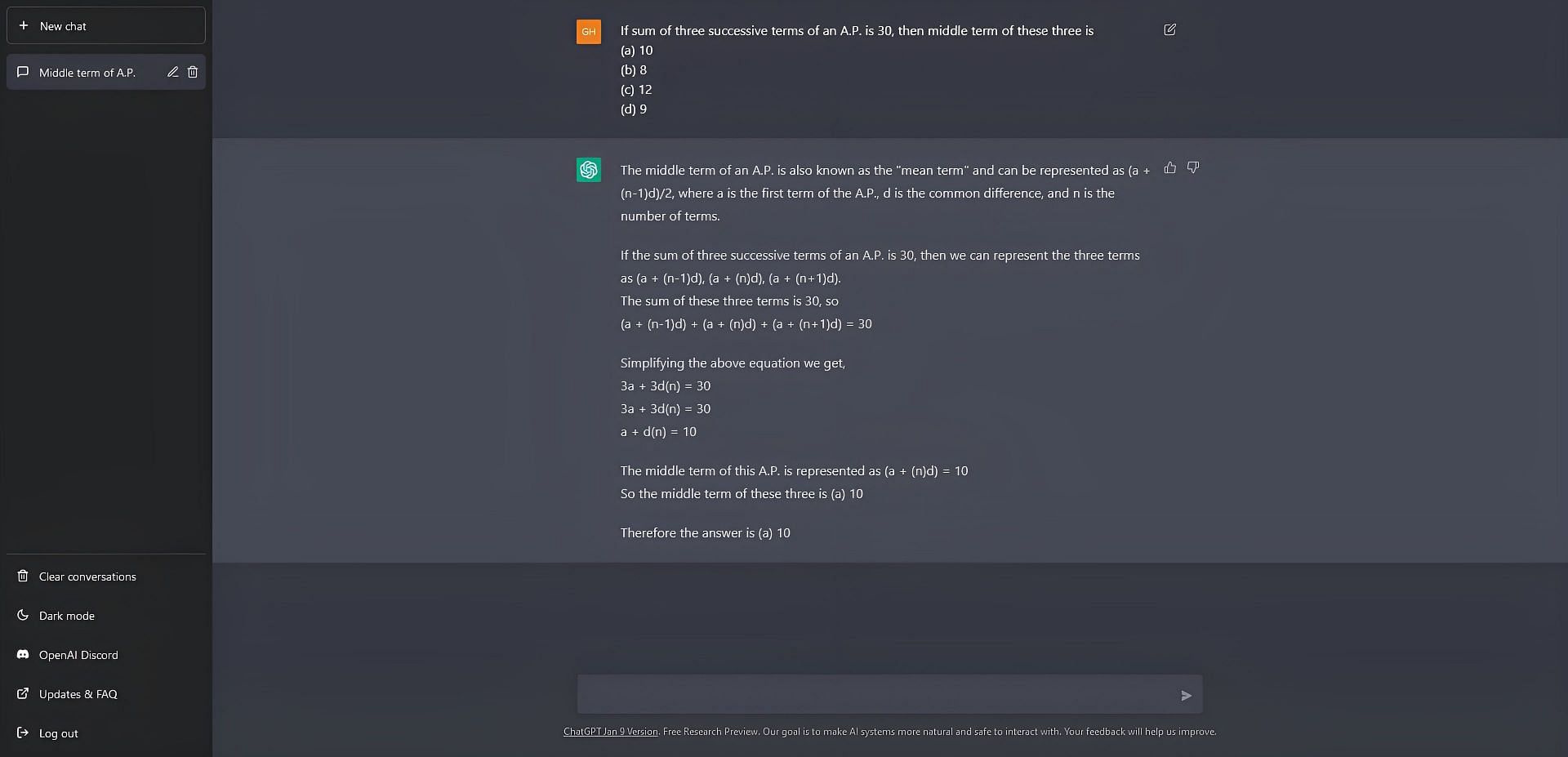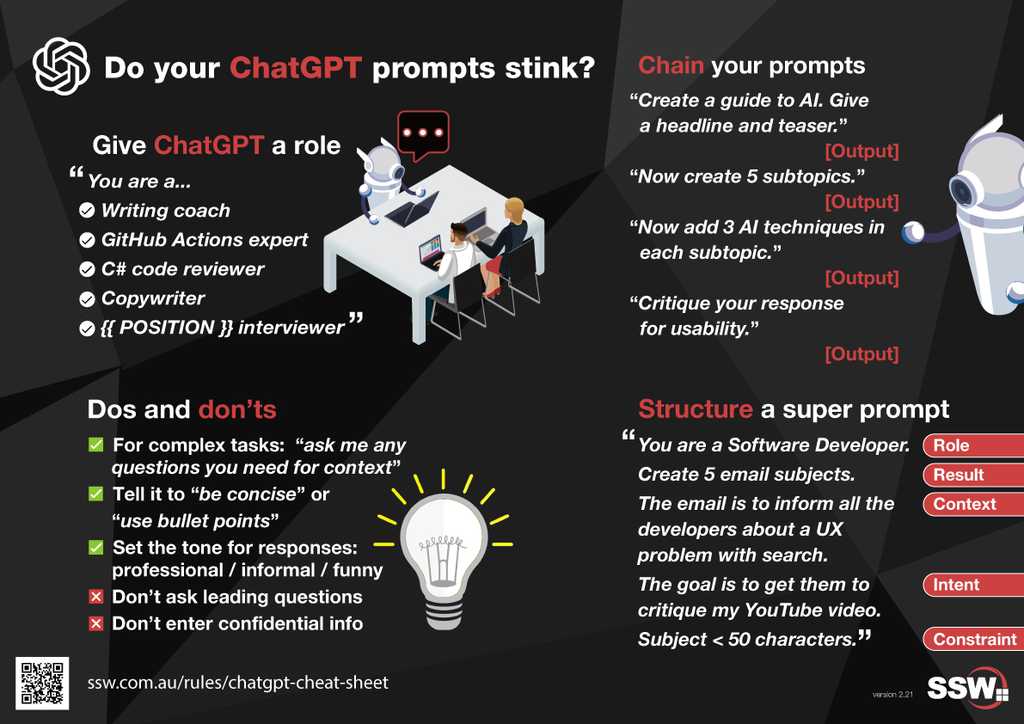The Art of Crafting Effective Prompts
Crafting effective prompts is a crucial step in encouraging ChatGPT to generate longer responses. A well-structured prompt serves as a roadmap for the model, guiding its output and helping it to provide more detailed and elaborate answers. To create effective prompts, it’s essential to understand the importance of clarity, concision, and specificity.
A clear prompt is one that is easy to understand and free of ambiguity. It should provide a clear direction for ChatGPT, indicating what type of response is expected. For example, instead of asking “What is the meaning of life?”, a clearer prompt would be “Can you explain the concept of the meaning of life and its significance in human existence?” This revised prompt provides a clear direction for ChatGPT, encouraging it to provide a more detailed and elaborate response.
Concise prompts are also essential for encouraging longer responses from ChatGPT. A concise prompt is one that is brief and to the point, avoiding unnecessary words or phrases. By keeping the prompt concise, you can help ChatGPT focus on the essential information and provide a more detailed response. For instance, instead of asking “Can you write a story about a character who goes on a journey of self-discovery and learns valuable lessons about life?”, a more concise prompt would be “Write a story about a character’s journey of self-discovery.”
Specificity is another critical aspect of crafting effective prompts. A specific prompt is one that provides clear details and context, helping ChatGPT to understand the topic and provide a more accurate response. For example, instead of asking “What are the benefits of meditation?”, a more specific prompt would be “Can you explain the benefits of meditation for reducing stress and anxiety in individuals with busy lifestyles?” This revised prompt provides clear context and details, encouraging ChatGPT to provide a more detailed and elaborate response.
By incorporating these elements into your prompts, you can encourage ChatGPT to generate longer responses that provide more value and insight. Remember, the key to crafting effective prompts is to be clear, concise, and specific. By doing so, you can unlock ChatGPT’s full potential and get the most out of your interactions with the model. If you’re looking for ways to make ChatGPT write longer, start by focusing on the art of crafting effective prompts.
Understanding ChatGPT’s Limitations: Why Responses Are Sometimes Short
ChatGPT is a powerful language model, but it’s not perfect. There are several technical limitations that can result in shorter responses. Understanding these limitations is crucial to working effectively with the model and finding ways to overcome them. One of the main limitations is the token limit. ChatGPT has a maximum token limit, which determines the maximum length of the input prompt and the response. If the prompt exceeds this limit, the model may truncate the response or fail to generate a response at all.
Another limitation is the context window. ChatGPT’s context window determines how much context the model can consider when generating a response. If the context window is too small, the model may not be able to capture the full context of the prompt, resulting in shorter responses. Computational resources are also a limiting factor. ChatGPT requires significant computational resources to generate responses, and if these resources are limited, the model may not be able to generate longer responses.
So, how can you work around these limitations to encourage ChatGPT to generate longer responses? One strategy is to break up long prompts into smaller, more manageable chunks. This can help to avoid exceeding the token limit and ensure that the model can generate a response. Another strategy is to provide more context, either by increasing the context window or by providing additional information that can help the model understand the prompt.
Additionally, you can try to optimize your prompts to make the most of ChatGPT’s capabilities. This can involve using more specific language, providing clear instructions, and avoiding ambiguity. By understanding ChatGPT’s limitations and working around them, you can encourage the model to generate longer responses and get more value out of your interactions. If you’re looking for ways to make ChatGPT write longer, understanding the model’s limitations is a crucial step in the process.
By being aware of these limitations, you can adapt your approach to working with ChatGPT and find ways to overcome them. This might involve experimenting with different prompt formats, using more specific language, or providing additional context. With a little creativity and persistence, you can encourage ChatGPT to generate longer responses and get more value out of your interactions with the model.
Using Context to Guide ChatGPT’s Responses
Context plays a crucial role in shaping ChatGPT’s output. By providing relevant background knowledge, specific examples, or contextual information, you can guide the model’s responses and encourage longer, more detailed answers. One way to use context effectively is to provide a clear and concise summary of the topic or issue at hand. This can help ChatGPT understand the context and generate a more informed response.
For example, if you’re asking ChatGPT to explain a complex technical concept, providing a brief overview of the topic and its relevance can help the model generate a more detailed and accurate response. Additionally, using specific examples or anecdotes can help illustrate the concept and provide more context for ChatGPT to work with.
Another way to use context effectively is to provide relevant background information. This can include historical context, cultural context, or any other relevant information that can help ChatGPT understand the topic or issue. By providing this context, you can help the model generate more informed and detailed responses.
It’s also important to note that context can be used to guide ChatGPT’s responses in a more subtle way. For example, using certain keywords or phrases can help the model understand the tone or style of the response you’re looking for. By using context in this way, you can encourage ChatGPT to generate responses that are more tailored to your needs.
When using context to guide ChatGPT’s responses, it’s essential to strike the right balance. Providing too much context can overwhelm the model and result in shorter responses, while providing too little context can result in responses that are unclear or inaccurate. By finding the right balance, you can use context to encourage ChatGPT to generate longer, more detailed responses that provide more value and insight.
By incorporating context into your prompts, you can unlock ChatGPT’s full potential and get more out of your interactions with the model. Whether you’re looking for ways to make ChatGPT write longer or simply want to improve the quality of your interactions, using context effectively is a crucial step in the process.
Leveraging ChatGPT’s Ability to Reason and Explain
ChatGPT’s ability to reason and explain is one of its most powerful features. By leveraging this ability, you can encourage the model to provide more detailed and elaborate responses. One way to do this is to ask open-ended questions that require ChatGPT to think critically and provide explanations. For example, instead of asking “What is the definition of artificial intelligence?”, you could ask “Can you explain the concept of artificial intelligence and its applications in modern technology?”
This type of question encourages ChatGPT to provide a more detailed and elaborate response, as it requires the model to think critically and provide explanations. Additionally, you can use prompts that ask ChatGPT to compare and contrast different concepts or ideas. This type of prompt encourages the model to think critically and provide more detailed responses.
Another way to leverage ChatGPT’s ability to reason and explain is to ask the model to provide examples or anecdotes to support its responses. For example, you could ask “Can you provide an example of how artificial intelligence is being used in the healthcare industry?” This type of prompt encourages ChatGPT to provide more detailed and elaborate responses, as it requires the model to think critically and provide specific examples.
By using these types of prompts, you can encourage ChatGPT to provide more detailed and elaborate responses, and get more value out of your interactions with the model. Whether you’re looking for ways to make ChatGPT write longer or simply want to improve the quality of your interactions, leveraging the model’s ability to reason and explain is a crucial step in the process.
It’s also important to note that ChatGPT’s ability to reason and explain can be influenced by the quality of the prompt. A well-crafted prompt that is clear, concise, and specific can encourage the model to provide more detailed and elaborate responses. On the other hand, a poorly crafted prompt can result in shorter and less informative responses.
By understanding how to leverage ChatGPT’s ability to reason and explain, you can unlock the model’s full potential and get more out of your interactions. Whether you’re looking for ways to make ChatGPT write longer or simply want to improve the quality of your interactions, this is a crucial step in the process.
Encouraging ChatGPT to Elaborate and Provide Examples
Encouraging ChatGPT to elaborate and provide examples is a great way to get more detailed and informative responses. One way to do this is to ask the model to provide specific examples or anecdotes to support its responses. For example, you could ask “Can you provide an example of how a company has successfully implemented a new technology?” or “Can you tell me a story about a time when a team overcame a difficult challenge?”
Another way to encourage ChatGPT to elaborate is to ask open-ended questions that require the model to think critically and provide more detailed responses. For example, you could ask “What are the potential benefits and drawbacks of implementing a new technology?” or “How might a team’s dynamics change if they were to adopt a new communication strategy?”
Additionally, you can use prompts that ask ChatGPT to provide supporting evidence or data to back up its responses. For example, you could ask “Can you provide some statistics or research to support your claim that a certain technology is effective?” or “Can you explain the methodology behind your analysis and provide some examples of how it has been applied in the past?”
By using these types of prompts, you can encourage ChatGPT to provide more detailed and informative responses, and get more value out of your interactions with the model. Whether you’re looking for ways to make ChatGPT write longer or simply want to improve the quality of your interactions, encouraging the model to elaborate and provide examples is a crucial step in the process.
It’s also important to note that the way you phrase your prompts can have a big impact on the quality of ChatGPT’s responses. By using clear and concise language, and asking specific and targeted questions, you can encourage the model to provide more detailed and informative responses.
By incorporating these strategies into your interactions with ChatGPT, you can get more out of the model and achieve your goals. Whether you’re looking for ways to make ChatGPT write longer or simply want to improve the quality of your interactions, encouraging the model to elaborate and provide examples is a key part of the process.
Using Follow-Up Questions to Extend ChatGPT’s Responses
Using follow-up questions is a great way to encourage ChatGPT to expand on its initial responses and provide more detailed and informative answers. By asking follow-up questions, you can delve deeper into a topic and get more value out of your interactions with the model.
One way to use follow-up questions effectively is to ask for clarification or additional information on a specific point. For example, if ChatGPT provides a brief overview of a topic, you could ask “Can you elaborate on that point?” or “Can you provide more information on that topic?”
Another way to use follow-up questions is to ask for examples or anecdotes to support ChatGPT’s responses. For example, you could ask “Can you provide an example of how that concept has been applied in real-world scenarios?” or “Can you tell me a story about a time when that technique was used successfully?”
Additionally, you can use follow-up questions to ask ChatGPT to compare and contrast different concepts or ideas. For example, you could ask “How does that concept differ from other similar concepts?” or “Can you compare and contrast the advantages and disadvantages of different approaches?”
By using follow-up questions in this way, you can encourage ChatGPT to provide more detailed and informative responses, and get more value out of your interactions with the model. Whether you’re looking for ways to make ChatGPT write longer or simply want to improve the quality of your interactions, using follow-up questions is a crucial step in the process.
It’s also important to note that the way you phrase your follow-up questions can have a big impact on the quality of ChatGPT’s responses. By using clear and concise language, and asking specific and targeted questions, you can encourage the model to provide more detailed and informative responses.
By incorporating follow-up questions into your interactions with ChatGPT, you can get more out of the model and achieve your goals. Whether you’re looking for ways to make ChatGPT write longer or simply want to improve the quality of your interactions, using follow-up questions is a key part of the process.
Fine-Tuning ChatGPT for Longer Responses: Advanced Techniques
Fine-tuning ChatGPT for longer responses requires a deep understanding of the model’s capabilities and limitations. By using advanced techniques, you can encourage ChatGPT to generate more detailed and informative responses. One way to do this is to use specific keywords and phrases that are relevant to the topic or subject matter.
For example, if you’re asking ChatGPT to write a story about a character who is a scientist, you could use keywords like “lab”, “experiment”, and “hypothesis” to encourage the model to generate a more detailed and technical response. Similarly, if you’re asking ChatGPT to write a poem about nature, you could use phrases like “sunrise”, “mountains”, and “ocean” to encourage the model to generate a more descriptive and evocative response.
Another way to fine-tune ChatGPT for longer responses is to use linguistic patterns and structures that are commonly used in writing. For example, you could use transitional phrases like “however”, “in addition”, and “meanwhile” to encourage ChatGPT to generate a more cohesive and well-organized response.
Additionally, you can use techniques like priming and prompting to encourage ChatGPT to generate longer responses. Priming involves providing the model with a specific piece of information or context that is relevant to the topic or subject matter. Prompting involves asking the model to generate a response based on a specific prompt or question.
By using these advanced techniques, you can fine-tune ChatGPT to generate longer and more detailed responses. Whether you’re looking for ways to make ChatGPT write longer or simply want to improve the quality of your interactions with the model, these techniques can help you achieve your goals.
It’s also important to note that fine-tuning ChatGPT for longer responses requires patience and experimentation. You may need to try different techniques and approaches to find what works best for you and your specific use case. However, with persistence and creativity, you can unlock ChatGPT’s full potential and generate longer and more informative responses.
By incorporating these advanced techniques into your interactions with ChatGPT, you can take your writing and communication to the next level. Whether you’re a writer, a student, or simply someone who wants to improve their communication skills, fine-tuning ChatGPT for longer responses can help you achieve your goals.
Best Practices for Working with ChatGPT: Maximizing Response Length
Working with ChatGPT requires a combination of creativity, experimentation, and patience. To maximize response length and get the most out of the model, it’s essential to understand the best practices for working with ChatGPT. Here are some key takeaways from this article:
First, it’s crucial to craft effective prompts that guide the model’s output. This involves creating clear, concise, and specific prompts that provide context and direction for the model. By doing so, you can encourage ChatGPT to generate longer and more detailed responses.
Second, understanding ChatGPT’s limitations is vital. By recognizing the technical constraints that can result in shorter responses, you can work around them and encourage the model to generate longer responses. This involves using techniques such as priming, prompting, and fine-tuning the model to generate longer responses.
Third, using context to guide ChatGPT’s responses is essential. By providing relevant background knowledge, specific examples, or contextual information, you can encourage the model to generate longer and more detailed responses.
Finally, experimentation and creativity are key to getting the most out of ChatGPT. By trying different techniques, prompts, and approaches, you can discover what works best for you and your specific use case. Whether you’re looking for ways to make ChatGPT write longer or simply want to improve the quality of your interactions with the model, these best practices can help you achieve your goals.
By following these best practices and incorporating the techniques outlined in this article, you can unlock ChatGPT’s full potential and generate longer and more detailed responses. Remember to always experiment, be creative, and patient when working with the model, and you’ll be well on your way to maximizing response length and achieving your goals.
With these best practices in mind, you can take your writing and communication to the next level with ChatGPT. Whether you’re a writer, a student, or simply someone who wants to improve their communication skills, these tips can help you get the most out of the model and achieve your goals.

